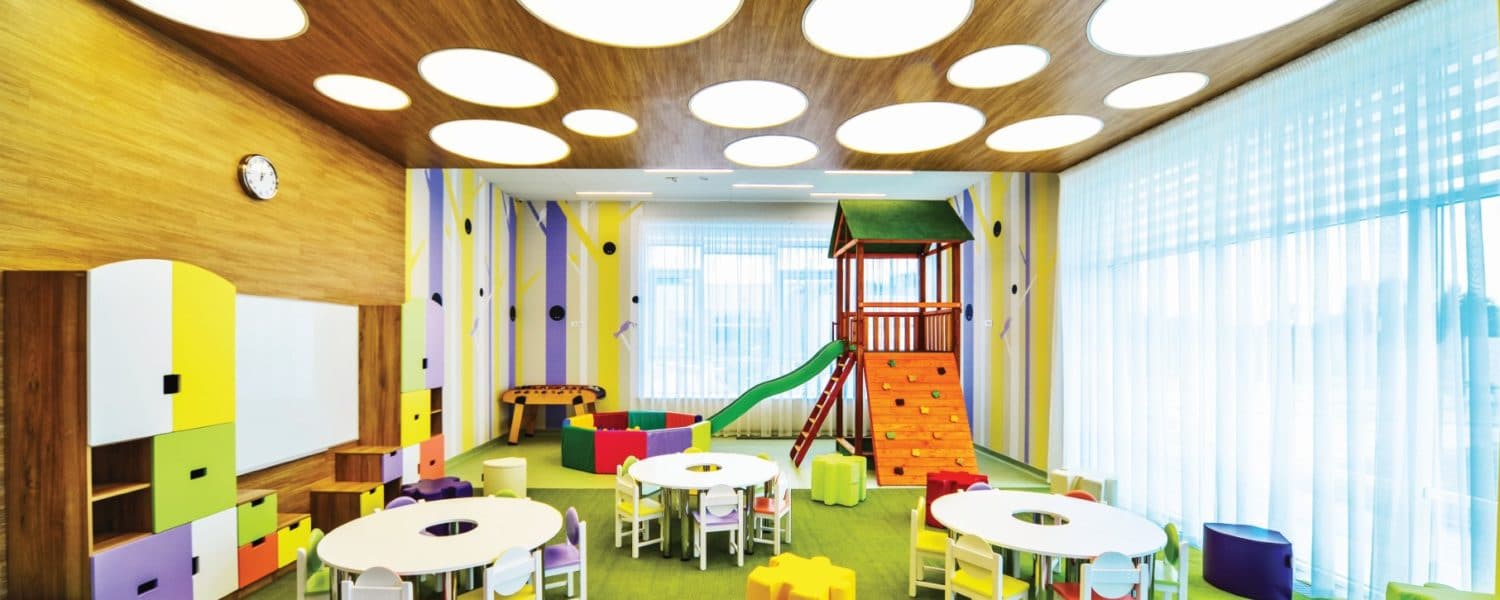By Kristin Charles
Maybe I just have a thing for aesthetics, but there is something to be said for a warm and welcoming environment. Have you ever walked into a classroom that invites you in with color and comfort and encouragement?
These places of learning are organized, interactive, and vibrant. On the walls, you’ll find pictures of students laughing, words of wisdom and humor, and unique decor.
This is the kind of place where I want to be! More importantly, it’s the kind of place where children grow to become more like Christ.
Many of our children’s church environments are effective in engaging children. We use the little resources that we have to make the best of what we have. But there is always room for re-evaluation and assessment.
Sometimes it’s best to have an outsider come in and give his/her honest opinion on our ministry surroundings. Sometimes it’s best just to change things up on a regular basis.
Even if your facilities themselves are not ideal, you can still create a welcoming environment at little cost.
Included below are some ideas to utilize while looking at your own space.
1. Use Unique Décor
Whatever you choose to decorate your environment in, ensure that it is colorful, fanciful, and has depth. As a teacher, I love bulletin boards, but go beyond the flat space on a wall.
For fall, use cornstalks, hay bales, and pumpkins to incorporate a harvest theme. For winter, make a snowman out of big foam balls and decorate him. Use white lights and Poly-Fill for snow.
For spring, bring in the flowers, the rake, the shovels, and packets of seed. Summer could have hula hoop decorations, a surfboard, sunglasses, towels, and flip flops.
Of course, make sure that your environment coincides with the curriculum you are covering.
To cut costs, scour your basement or the church’s supply cabinets. Send out a letter asking for needed supplies ahead of time or put a note in your church bulletin. If you have to spend money, dollar stores are always perfect places for decorative touches.
2. Thrive on Organization and Cleanliness
It is essential in a children’s classroom to maintain order and efficiency. Ensure that everything has its specific place and is labeled clearly.
Allow your students to help in the clean-up. For younger children, use pictures as labels.
It goes without saying that the environment should be clean for everyone’s health and safety.
3. Let Scripture Speak
When you’re not speaking (or when children are distracted… which is often!), allow the walls to speak the Word of God to your students. Have scripture posted that coincides with what you are learning.
4. Change Things Up
Children will stop noticing what is on the walls if they are not changed regularly. If the decor cannot be changed on a monthly basis, make it a habit to change it quarterly. Or, follow a rotation in which you change certain components one month at a time.
5. Welcome Children
Essential to a welcoming environment is the children’s workers themselves. A facility could be dynamic, yet without loving teachers, it becomes drab.
On the mission field, I have witnessed many impoverished ministry environments, but the teachers were so rich in God and His compassion end energy that the children looked beyond their surroundings. They came because they saw Jesus in these servants who got on their level and welcomed them by name, high fives, and fist pounds.
6. Allow Ownership
Children love to have a place to call their own. Personalize the environment with student art, photographs, messages, and projects. Invite student input as to what their children’s church might look like.
7. Collaborate on a Project
Work together on a unifying task. It could be a classroom quilt (fabric or poster board), with each child creating their own unique square.
Have them collaborate on a giant sculpture, a reading area, or a servant station.
Years ago, my mom’s second graders worked together to create a gigantic dinosaur. I still hear stories about the pride on their faces when it was unveiled. Thirty some years later, that dinosaur is still taking up residence in that school.
It may be a big undertaking, but a collaborative project may be treasured for years to come.
8. Pray on Location
Spending time in prayer on location is invaluable. Sit in your students’ seats and pray for them by name. Pray for their families. Pray that God would give them wisdom, discernment, understanding, and a heart that desires to follow His precepts.
9. Provide Interaction
Think about the purpose of your bulletin boards. Some should be decorative, others informational, and some should be interactive.
For interactive boards, have your students recommend books, worship songs, or favorite candy. Have them vote on how to best handle situations. Post your student (or staff) baby pictures and have the class try to guess who’s who.
Make a graffiti wall of thanks, favorite verses, things that make them smile, and/or encouragement for others. Highlight one student every couple of weeks with his or her own “About Me” board.
10. Utilize Centers
Centers are conducive to any age group, but most essential in the early childhood years. They allow the child to choose what he/she wants to be involved in if there is time set aside for free play and exploration.
Centers could include a reading center with sack chairs and biblically based books, an imagination station with dress up outfits and props, or an exploration station with water, sand, or science discoveries.
When creating these stations, consider how to broaden a child’s understanding of God through play.
Kristin Charles writes for www.Ministry-To-Children.com, a resource started by Tony Kummer to solve children’s ministry problems.




